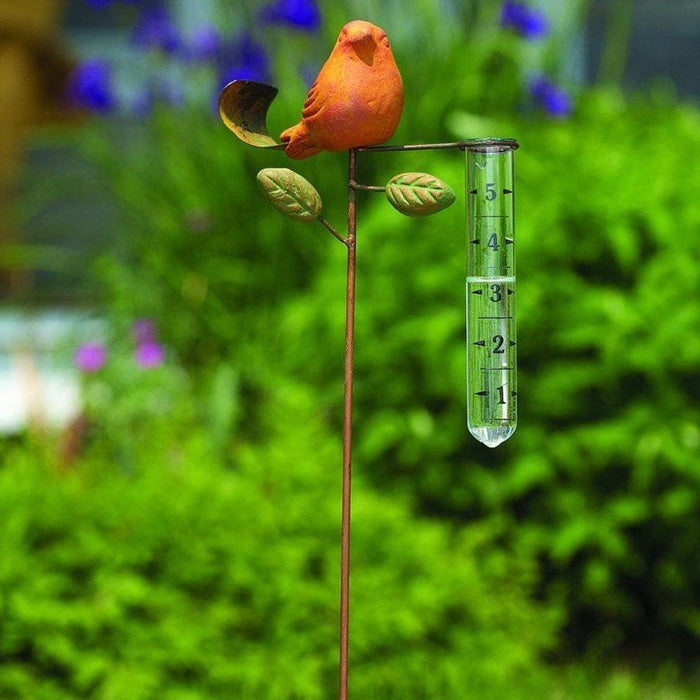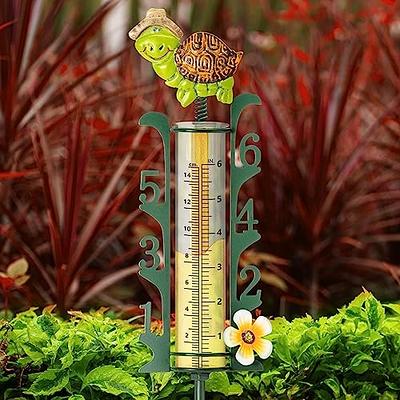The Rain Gauge: Figuring Out Rain Patterns and Enhancing Weather Condition Recognition
The Rain Gauge: Figuring Out Rain Patterns and Enhancing Weather Condition Recognition
Blog Article
Understanding Rain Scale Measurements: A Complete Overview
Understanding Rain Scale Dimensions: A Total Guide is a comprehensive resource for any individual seeking a much deeper understanding of rainfall gauge measurements. Whether you are a professional in the field or simply have an inquisitiveness regarding rainfall dimension, this overview will certainly furnish you with the understanding needed to effectively make use of rain scale measurements.
The Relevance of Rain Gauge Measurements
The importance of rainfall gauge dimensions hinges on their role as an important tool for properly evaluating and checking precipitation levels - The Rain Gauge. Rain scale dimensions provide important data that helps hydrologists and meteorologists comprehend patterns and trends in rains, which consequently help in numerous areas such as farming, water resource management, and environment research

Precise rains measurements are crucial for agriculture as they help in determining irrigation requirements, plant development, and return forecasts. Farmers rely upon this info to make enlightened decisions regarding when to water their crops, avoiding water waste and making sure optimal plant health and wellness. Additionally, rainfall data aids in analyzing the effect of droughts or excessive rains on plant manufacturing, enabling farmers to take proper procedures to reduce losses.
Water resource management greatly relies on rainfall gauge measurements to identify the quantity of water readily available in rivers, storage tanks, and lakes. Accurate dimensions allow water managers to make enlightened decisions about water allocation and distribution, ensuring sustainable usage and protecting against lacks. This info is especially essential in regions where water shortage is a pushing issue.
Furthermore, rainfall gauge measurements play an important role in environment study. By accurately measuring rains over extended periods, scientists can examine long-term environment patterns and determine adjustments in precipitation patterns due to climate change. This data helps scientists and policymakers develop techniques to adapt to and alleviate the effects of climate change.
Kinds Of Rainfall Scales
There are numerous sorts of rainfall evaluates used to gauge rainfall accurately. Each type has its own benefits and restrictions, making them appropriate for various objectives and settings.
One of the most typical kind of rainfall gauge is the typical round gauge. It consists of a round container with a vast funnel-shaped top to accumulate rainwater (The Rain Gauge). The water is then funneled right into a graduated determining tube, permitting for accurate measurement of the amount of rainfall
An additional type is the weighing rain gauge. Evaluating rainfall evaluates are particularly useful in areas with icy rainfall or heavy rains, as they are not impacted by spraying or evaporation.
Tipping bucket rain evaluates use a system that tips a tiny bucket each time it collects a details amount of rainwater. The variety of tips is tape-recorded and utilized to calculate the rainfall. This type of gauge is generally utilized in automated weather condition stations because of its low upkeep demands and capability to give real-time data.
Ultimately, there are radar-based rainfall evaluates that use radar innovation to approximate rains. These assesses gauge the intensity of rainfall in a certain location by assessing the reflected radar signals. They are especially valuable for measuring precipitation over big locations or in remote places.
How Rainfall Gauge Measurements Work
Rain gauge dimensions are based on the concept of gauging the quantity and collecting of precipitation. These tools are designed to record rain and offer an accurate dimension of the rainfall in a details area.
The most typical kind of rainfall gauge is the common cylindrical scale. It is composed of a cylindrical container with a large opening at the top to collect rain. The gathered water is then channelled right into a determining tube, which is calibrated to offer the measurement in devices of length, typically millimeters or inches.
Another kind of rainfall gauge is the tipping container scale. When they reach a certain weight limit, it uses a seesaw-like device with two buckets that tip. Each pointer of the container stands for a specific other volume of rains, enabling accurate measurements.
Some sophisticated rainfall evaluates are furnished with digital sensors that instantly document and transfer information. These sensors utilize numerous modern technologies such as ultrasound or laser to gauge the quantity of rains precisely.
Factors Impacting Rain Scale Accuracy
Elements that can affect the accuracy of rain gauge dimensions consist of various ecological and operational variables. Ecological elements such as wind, temperature level, and atmospheric pressure can dramatically impact the accuracy of rain gauge dimensions. Solid winds can trigger the rain gauge to move or turn, causing incorrect analyses. In a similar way, severe temperatures can create evaporation or freezing of the gathered rainwater, resulting in distorted measurements. Modifications in air pressure can likewise impact the precision of rain scale dimensions, as they can alter the price at which rains is accumulated.
Operational variables, on the various other hand, describe aspects connected to the style, installation, and upkeep of the rainfall gauge. The placement of the rainfall scale in a location with blocked airflow or near structures or trees can result in imprecise analyses because of obstruction or splattering of rainfall. Furthermore, inappropriate calibration or uneven maintenance of the rain gauge can additionally impact its accuracy.
To make sure the accuracy of rain gauge measurements, it is vital to take into consideration these factors and take ideal steps. This might include selecting a proper place for the rain scale, making sure proper installment and maintenance, and frequently adjusting the instrument. By resolving these elements, dependable and exact rainfall measurements can be obtained, which are important for different applications such as weather condition projecting, hydrological research studies, and agriculture.
Tips for Precisely Gauging Rain
To ensure specific rainfall dimensions, it is vital to implement specific techniques and techniques when utilizing a rain gauge. Right here are some pointers for accurately gauging rainfall:
Correct Positioning: Put the rainfall gauge in an open location, away from trees, structures, and other obstructions that may disrupt the rains collection. It must be placed on a degree surface to avoid water pooling or overflow.

Check Out the Range Properly: When taking measurements, checked out the water degree at eye level from all-time low of the lens. Prevent parallax errors by straightening your sight directly with the water level.
Consistent Time Interval: Establish a consistent time period for gauging rains, such as every 24-hour or after each rainfall event. This guarantees accurate tracking and comparison of rainfall data.
Record Measurements Quickly: Record rainfall dimensions you can look here immediately after collection to avoid evaporation or splilling. Make use of a rain gauge with a built-in data logging feature for automated recording.
Verdict
In final thought, recognizing rainfall gauge measurements is crucial for properly measuring rainfall. It is vital to consider variables that can impact the precision of rainfall scale measurements, such as evaporation, wind, and positioning.
Understanding Rainfall Gauge Measurements: A Full visit Guide is a thorough resource for any individual looking for a much deeper understanding of rainfall scale measurements. Whether you are a professional in the area or merely have an inquisitiveness regarding rains dimension, this guide will certainly outfit you with the knowledge required to properly utilize rain gauge dimensions.
The most typical kind of rain gauge is the common cylindrical gauge.The most usual type of rain gauge is the common round scale.Another type of rain gauge is the tipping pail scale.
Report this page